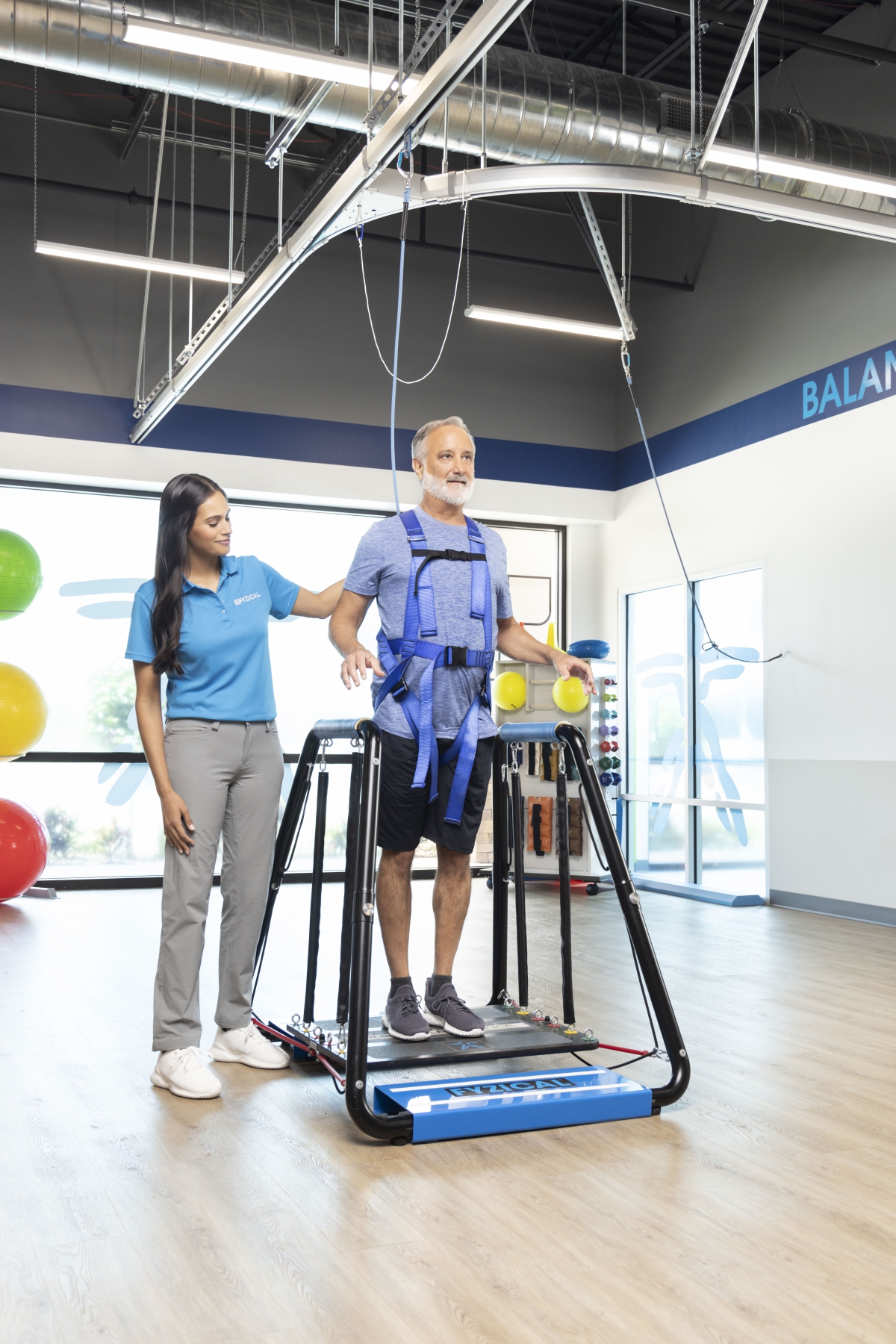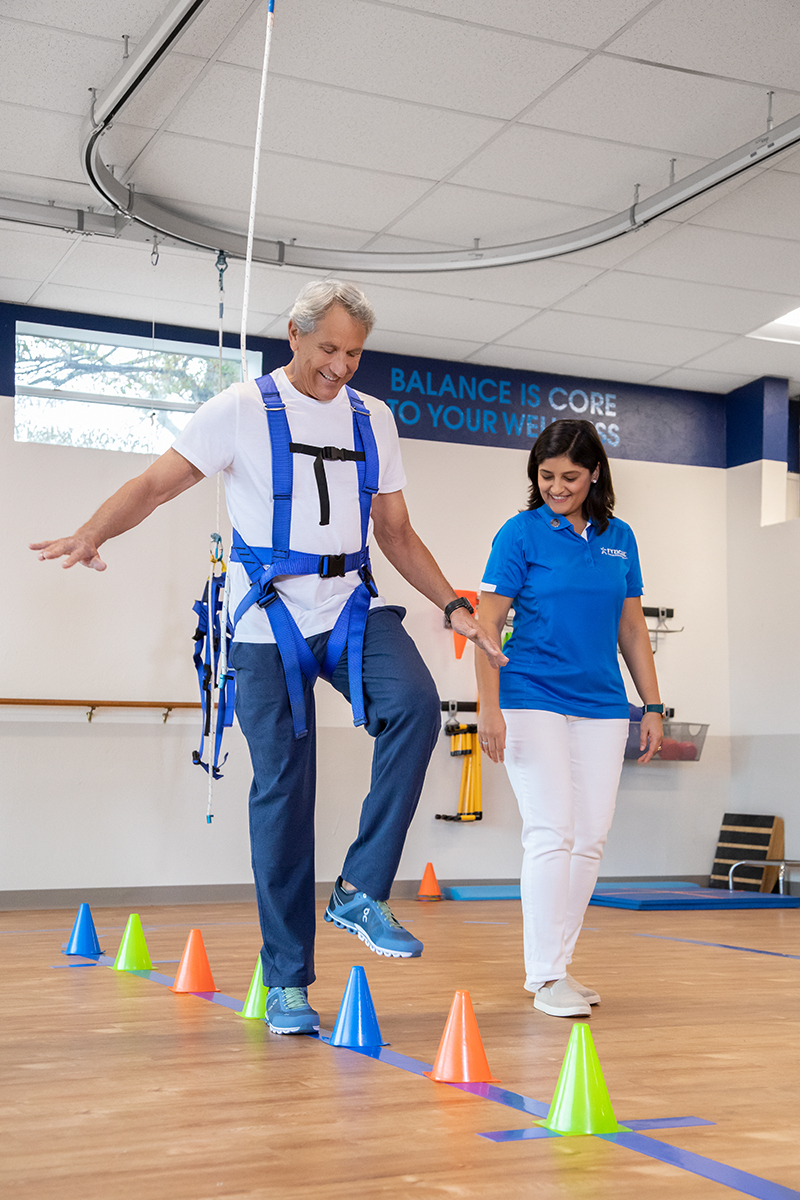Balance Therapy
Balance Therapy
Comprehensive Balance Therapy at FYZICAL Chastain Park, GA
At FYZICAL in Chastain Park, we know that maintaining balance is key to living a life of independence and confidence. Whether you’ve experienced a recent fall, are recovering from surgery, or simply want to enhance your mobility, our Balance Physical Therapy Program is designed to support you at every step. Our team of expert therapists work 1-on-1 with you and create personalized plans to improve your gait and balance, empowering you to move freely and safely in your daily life.
Why Balance Matters More Than Ever
Injuries due to falls are one of the leading causes of hospitalization, especially in older adults. However, balance issues can affect people of all ages. Addressing balance problems early can significantly improve your overall quality of life, prevent future falls, and give you the confidence to engage in daily activities without fear. Our program at FYZICAL Chastain Park is tailored to help you regain strength, stability, and peace of mind.
Personalized Balance Therapy Tailored to You
When you come to FYZICAL Chastain Park, your journey begins with a comprehensive assessment of your gait and balance. From there, we craft a customized Fall Risk & Prevention program designed to target your specific challenges. Expect a combination of exercises and therapies, including:
- Strengthening Exercises: Improve leg and core strength with movements designed to build stability.
- Posture Alignment: Correct posture issues that may contribute to imbalance and discomfort.
- Balance Coordination Drills: Enhance coordination between your eyes, muscles, and inner ear to improve stability.
- Vestibular Therapy: Address balance disorders caused by inner ear problems, reducing dizziness and disorientation.

Struggling with Balance or Gait Issues? Don't Live With It.
What Sets FYZICAL Chastain Park Apart
Our approach goes beyond standard physical therapy, to ensure that you receive the customized care you deserve, we offer 1-on-1 care We combine innovative techniques with a deep understanding of how different systems in your body—muscles, nerves, vision, and inner ear—work together to maintain balance. This holistic strategy allows us to deliver real, lasting results. Here’s what you can expect:
- Risk Reduction: Proactive measures to lower the chances of future falls and injuries.
- Increased Independence: Gain the confidence to move freely without fear of falling.
- Posture and Coordination: Our targeted exercises help you improve posture, reduce discomfort, and move more fluidly.
- Quality of Life: Experience a greater sense of freedom as you regain the ability to perform daily tasks independently.

Specialized Programs to Fit Your Needs
FYZICAL Chastain Park offers a variety of programs tailored to different balance and mobility needs, including:
- Gait Improvement: Focused training to help you walk confidently and efficiently.
- Fall Prevention: Exercises and techniques to reduce your risk of falling.
- Post-Surgery Recovery: Targeted balance training to help you regain strength and mobility after surgery.
- Vestibular Rehabilitation: Therapy aimed at addressing balance issues caused by inner ear disorders.
Having Balance Challenges?
Take Action Now.
FAQs:
What is balance therapy?
Who should consider balance physical therapy?
Anyone experiencing dizziness, balance difficulties/falls, or recovering from an injury or surgery can benefit from balance therapy. It's also great for seniors looking to prevent falls.
What happens during my first session?
Your first visit includes a full assessment of your balance, gait, and overall mobility. Based on the findings, our therapists will develop a customized plan for your therapy.
How long will I need balance therapy?
The length of the program varies depending on individual progress. Some patients may need just a few weeks of therapy, while others might benefit from ongoing sessions.
Does insurance cover balance therapy?
Most insurance plans cover balance therapy, but we recommend checking with your provider for details. We’re also happy to help clarify any insurance-related questions.
What should I wear to my sessions?
Wear comfortable, loose-fitting clothing that allows for movement. Sneakers or supportive footwear are ideal for these sessions.
Balance physical therapy focuses on improving stability, coordination, and reducing dizziness or fall risk through targeted exercises.
What conditions can balance therapy treat?
It helps with vertigo, vestibular disorders, concussion recovery, neurological issues, and post-surgical rehab.
What exercises are used in balance therapy?
Therapists use strength training, gait training, vestibular rehab, and balance-focused exercises.
Who should consider balance physical therapy?
Anyone experiencing dizziness, balance difficulties/falls, or recovering from an injury or surgery can benefit from balance therapy. It's also great for seniors looking to prevent falls.
What happens during my first session?
Your first visit includes a full assessment of your balance, gait, and overall mobility. Based on the findings, our therapists will develop a customized plan for your therapy.
How long will I need balance therapy?
The length of the program varies depending on individual progress. Some patients may need just a few weeks of therapy, while others might benefit from ongoing sessions.
Does insurance cover balance therapy?
Most insurance plans cover balance therapy, but we recommend checking with your provider for details. We’re also happy to help clarify any insurance-related questions.
What should I wear to my sessions?
Wear comfortable, loose-fitting clothing that allows for movement. Sneakers or supportive footwear are ideal for these sessions.
Take Control of Your Balance at FYZICAL Chastain Park
Don’t wait until a fall or injury affects your independence. At FYZICAL Chastain Park, we offer expert guidance and personalized therapies designed to help you regain control of your movement and improve your quality of life. Contact us today to schedule your personalized balance assessment and begin your journey to better health.
